Why do we need advanced analytics in SIBUR
When you encounter a problem, you begin to look for ways to solve it, thinking at the same time how to walk the same rake again next time. Whatever you do, from small mobile applications to bulky information systems, an error always has a price, and the more critical the industry in which your product is used, the higher the price of this error. Therefore, the ideal situation is when you are working ahead of the curve, namely, trying to predict the occurrence of a problem before it actually occurs. Polypropylene Extruder
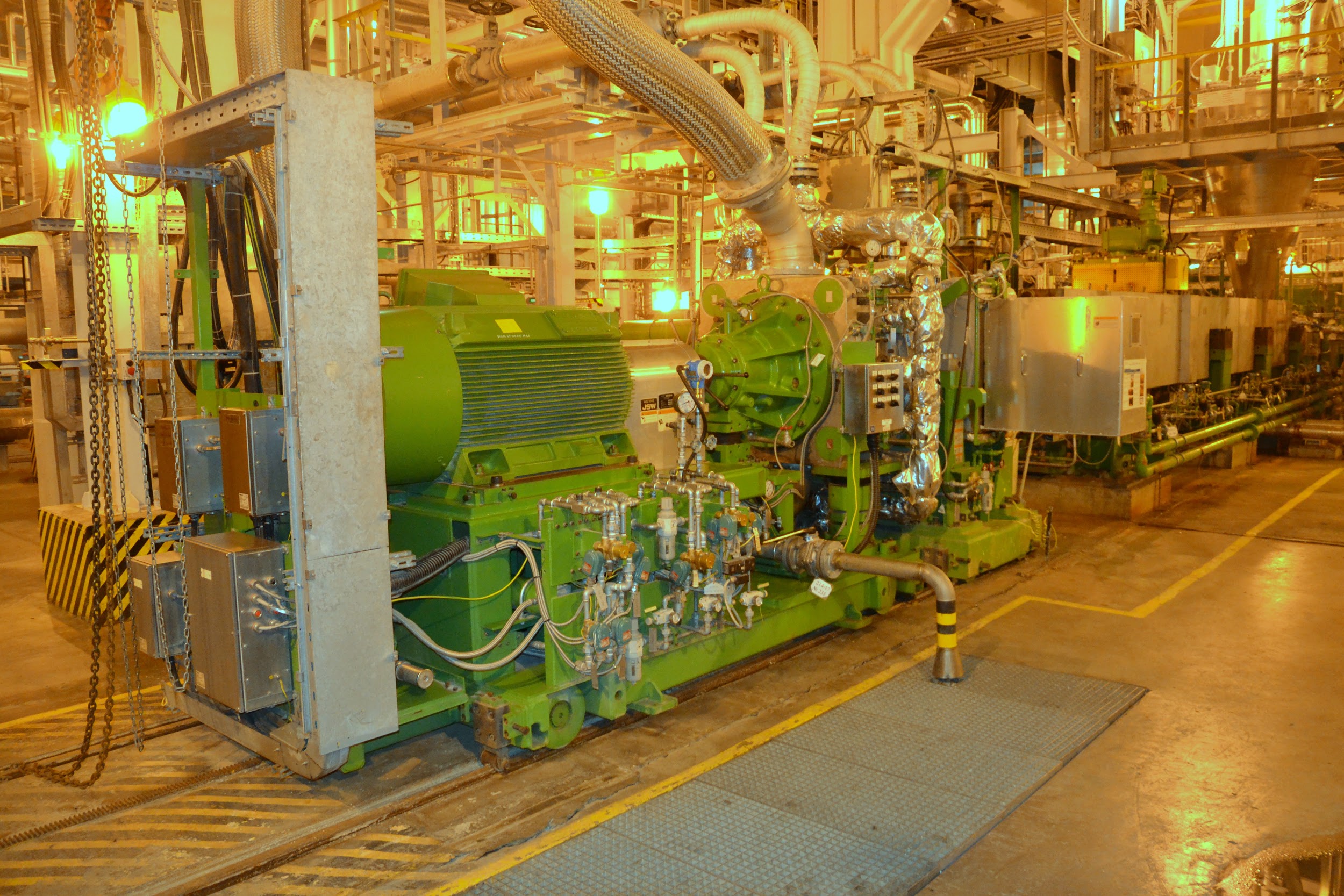
In SIBUR, we have the “Digital Technologies” function, one of the areas of which is engaged in advanced analytics. We participate in all processes, one way or another, related to the analysis of data that is in the company: from the readings of many sensors from production to stock summaries and forecasts. Using this data, we create digital products that significantly help to increase the operational efficiency of the company.
My name is Alexander Krot, I represent the direction of advanced analytics, and under the cut will tell you this:
Operational production efficiency can be improved in two ways. The first is to increase production with a more stable production regime. The second is the reduction of losses due to unplanned outages, each of which costs us millions of losses.
Very often, a working model that will be used for predictive analytics is simply understood as a program. Like, here is a code for you, it will help to predict possible problems, use it. We decided to go the other way and create a ready-made model as a full-fledged turnkey product, the output is a self-learning working model that can be adjusted, convenient interfaces and monitoring terminals, and also support that responds to requests from users of new functions. Our users are operators who monitor the production process, so they know exactly what and how to change the product so that it is more convenient to use. After all, it is the operators who will monitor the terminal, respond to changes in indicators and make adjustments.
Therefore, we build such models according to the classic product scheme, a team is created for each product with the product owner, developer, designer, data engineer. There is always a production technologist in the team - an employee who understands exactly how the production process is arranged, which we intend to improve.
Each of these projects lasts from 3 to 6 months, depending on its complexity. To begin with, we conduct reconnaissance by sending a team to the fields (to enterprises), we have a research procedure called “framing” in order to determine exactly what the customer wants and whether it is possible to solve the problem with the help of data. If possible, then we begin to evaluate further: will there be enough available data to solve the problem, where can they be downloaded, will organizational changes be required. Of course, we separately consider the economic effect in order to subsequently rank the projects and take only those that give the maximum effect. It’s clear that if we spend a lot of time and energy on a project, which in the end will save 5,000 rubles a month or a couple of bulbs, then such a project is not really needed.
If we understand that the product will bring real benefits to the company (both in terms of optimizing the work itself and improving the conditions for the staff, and in terms of direct financial benefits), then we begin to work. Now we have implemented almost a dozen different projects at this pace, in this article I want to dwell on a couple of the most significant of them.
One of the products SIBUR sells is polypropylene; we sell it in the form of granules packaged in bags (we wrote more about our products here ). The production of polypropylene from gas itself takes several stages, we will stop here at the last - cutting granules. There are peroxide grades of polypropylene; peroxide is added to the homogenized mass of polypropylene in order to create them. That is, the melt flows with such polypropylene, peroxide is added to it on the fly, all this mass is mixed and fed into the extruder.
An extruder is like a big meat grinder in its essence. Only the size of an average one bedroom apartment. The parts of the extruder that are of interest to us in this matter are augers (like a meat grinder, here it mixes the melt with peroxide), a die (this is already an analog of the mesh in the meat grinder, to which this mixture is fed under pressure) and a cartridge with knives that are reversed the sides of the die actively cut polypropylene pasta into granules. Then the chopped granulate rises with a stream of air onto a special vibrating screen, the granules are packed in bags and are generally ready for transportation.
For various reasons, unscheduled shutdowns of the extruder occur.
For example, peroxide did not mix well because the temperature was slightly disturbed, or insufficient pressure was applied, or something else. It ends with the fact that between the die and the cartridge with knives all this mass begins to stick. Because of this, instead of normal granules, an agglomerate is formed, which rises with the air flow up and clogs the vibrating screen.
The point here is that if these agglomerates become visible, it means that everything in the extruder itself is already completely clogged. It is necessary to stop production, turn off everything, disassemble, remove parts, clean the die and knives. It all stops usually longer than half an hour, and the company costs serious money.
And here and here, actually, data science.
In 2017, there were 19 such outages. We collected data on them, looked at the parameters of the technological regime of production - telemetry of extrusion and polymerization. We analyzed all this, found a number of patterns. The result was the creation of a model that begins to signal to the operator that something might soon clog, about an hour before the occurrence of such an event.
We supplied the operators with a complete system. Now they have an interface, several screens on which we display in real time all telemetry associated with the process technology. For simplicity, we highlight the desired indicators in different colors (green-yellow-red), like on a speedometer. Moreover, visually when looking at the extruder, nothing can be assumed yet, and the system, having checked the telemetry and indications, will begin to alarm in advance that clogging is possible after 2 hours (the forecast horizon of our model). And what if right now it’s easy to tighten the knife clamp, for example, then an unplanned stop can be avoided.
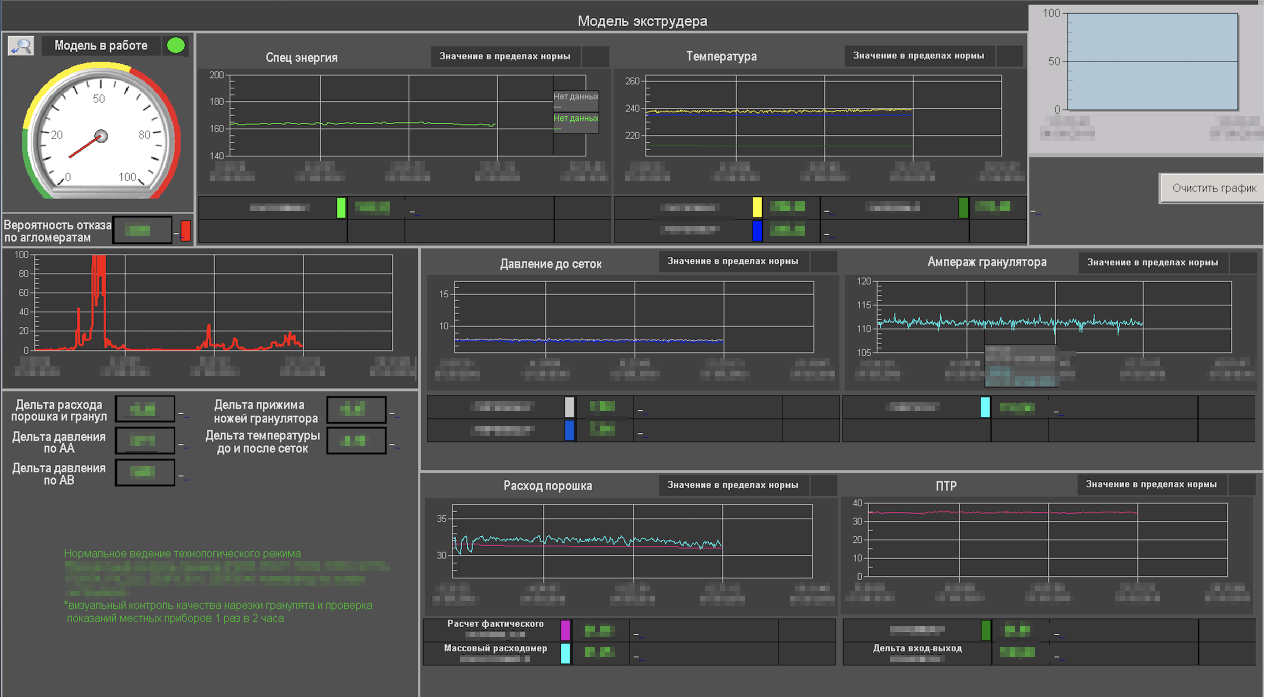
One of our main tasks is to ensure the survival of our tools. Operators must trust the system. If she often works falsely, and he is distracted and double-checks everything, then sooner or later he will react to her alarms as a familiar irritant. And then, in general, he will begin to think that they have set up some not-so-understandable system, which sometimes falsely works and distracts from work. Therefore, we trained the model on the fly to minimize this. We installed video cameras over the vibrating screen, so that the operator can watch how things are going, if the system suddenly misses something, in this case he will visually notice the agglomerates in advance, and not when all the vibrosieve is clogged. If production employees change knives or extruder settings, they immediately write to us in support and ask us to take this into account so that the model works more accurately.
What is the result. The model was launched in 2018. And from that moment we no longer had any unplanned stops.
This is a predictive maintenance project. It helps a lot in the work, for example, we predict the time by which something may go wrong with a particular installation, it will be necessary to replace the oil or bearing, and we will order the necessary parts in advance in order to be able to take and install them, and not solve issues with ordering, delivery, and more.
Now we turn to the optimization of production by maintaining the optimal mode.
Butadiene is our intermediate product, from which, for example, subsequently, the well-known synthetic rubber is made. Butadiene production has one peculiarity, a catalyst is needed for this, the element is quite valuable. Usually it is bought 2-3 years in advance and costs several billion rubles, since it contains precious metals.
We have 2 reactor blocks of 8 reactors each. Without going into detail about the technological mode of production, it is possible to describe the operator’s work in simple words like this: you have a set temperature (we call it “set point”), and it must be kept during the shift. It is regulated by dampers by air supply. The task of the operator is to maintain the temperature at the upper permissible limit, so that, on the one hand, the catalyst does not burn, and on the other, in order to obtain the maximum yield of the final product. In total, it comes down to maintaining the maximum stationary mode.
Therefore, it is necessary to keep even the temperature close to the upper boundary, when enough product is produced, but there is no harm to the catalyst. And everything would be fine (it would seem - fix the temperature and that's it), but many different factors influence this.
It is worth saying that the operator’s side is also not so simple there. Any of its actions to change the temperature by opening the dampers has an inertia of several hours. It’s easy at home in the shower, I opened hot water, I realized that I went too far, added cold, and then everything is OK. Until the washer began to draw water or one of the neighbors did not think about hygiene.
And here it is. You open the shutter by 1 degree, and you can not immediately evaluate the effect of this on the general temperature change. Total per shift, the average operator twists these flaps back and forth on average three times.
Here we collected historical data, looked at them, how much the temperature changes when opening the damper by 1 degree. On 2. On 3. As a result, a whole complex of models was built, which became a de facto recommendation system for operators. If suddenly somewhere the temperature differs from the set point, the system immediately alarms, which damper and how many degrees must be opened in order to reach the optimum temperature. The operator immediately sees this and reacts.
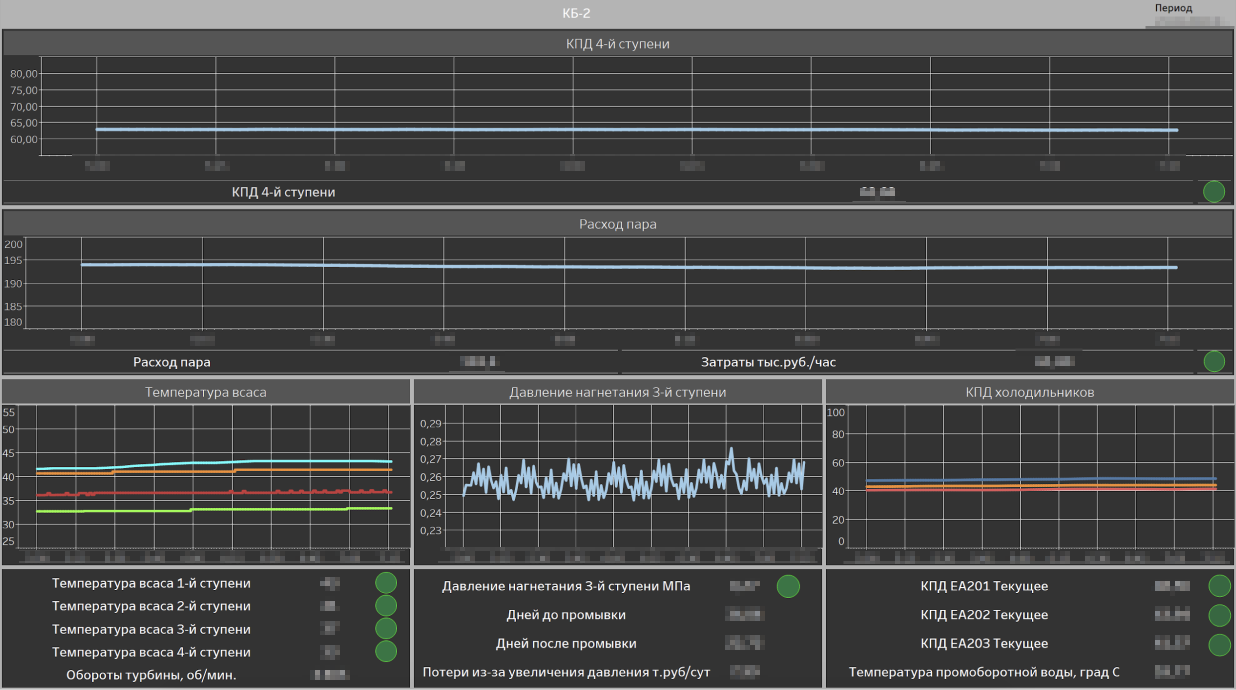
The effect on production is an average of about 1,000 additional tons of butadiene per year.
Here was another additional effect of the application of our model; we have changed the collective image of the operator himself. They became more diligent and more attentive, the operators were put in KPI absenteeism at the desired temperature abroad. Now they are discussing which shift did the job better, and are quickly learning new model features. In general, we gave them a good tool for them to do their job, and they give us quality feedback that allows us to improve this system.
The system automatically generates each operator at the end of the shift a report with its effectiveness, so that it is clear who today can boast of. And similar elements in production change the very culture of work. The operator’s image has also changed - it has become more digital, now operators understand and use digital tools, having all the necessary skills, and are also actively involved in the development and improvement of these tools.
Predictive model of coke formation of butylene fraction
Grids with thermocouples (temperature sensors) are installed in the reactors. Often, during the operation of the reactor, coke sticks to these grids, which leads to the destruction of the grids and an increase in repair time during shutdown. And when this happens, the reactor is stopped, all this is cleaned, and damaged elements are replaced. Simple in time about 7 days. The idea was to predict the formation of coke, burn it with a stop for a short period, and in this case without opening the reactor itself, thereby increasing the overhaul interval.
How can we understand that coke is starting to accumulate in the reactor? Get him an x-ray. But this entails great financial costs. Therefore, it was decided to optimize them and resort to analytics.
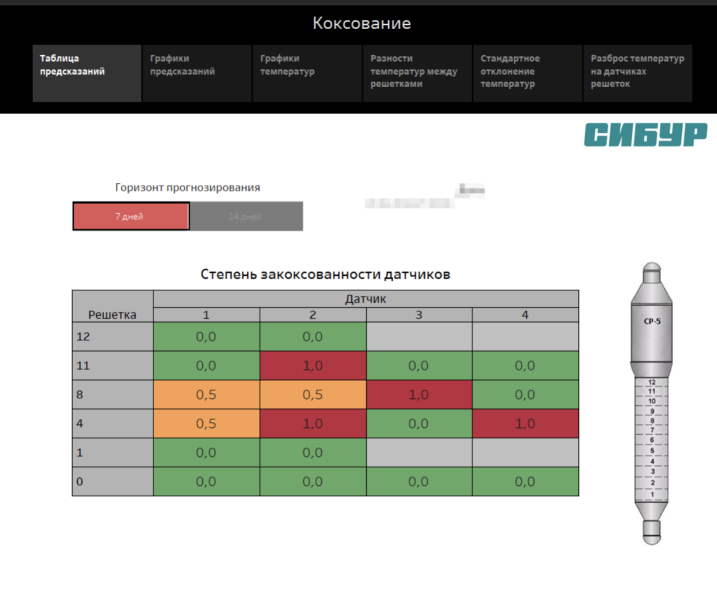
When coke begins to stick to temperature sensors, as a rule, they show a slightly lower temperature, as well as a lower dispersion of this temperature. We watched this, built a model that began to predict coking without gamma scanning. This model is still at the pilot stage, now its use allows you to:
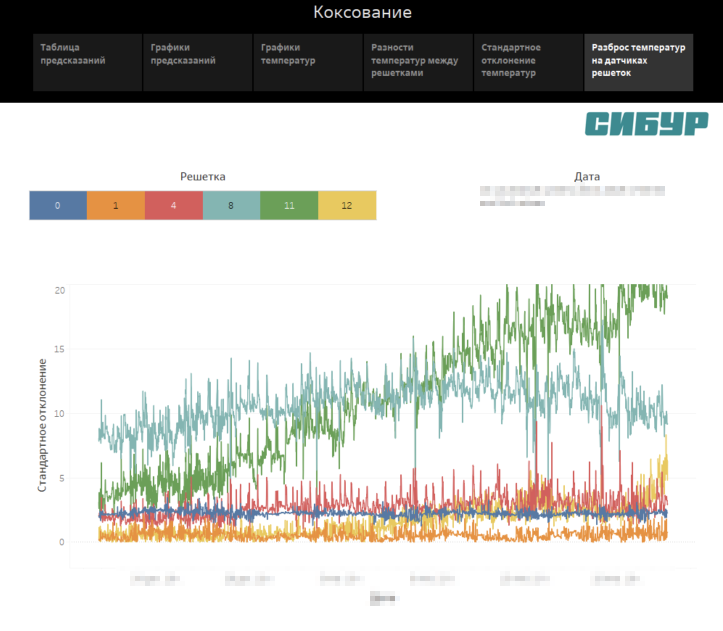
It may be thought that analytics in production is related only to production itself. In fact, this is not so, including marketing cases with us. For example, we can predict market prices for certain types of products.
It is important to note here again, we do not build models for the sake of models, we create finished products based on them. Therefore, we also created the ML framework, which has become virtually the single standard for model requirements. Regardless of which team made the product, or even these are third-party contractors through the API creating their models, it is important for us that all these models are in a single interface. This allows us to understand which of the models is working properly, which is starting to degrade, which has not started at all due to lack of data and so on.
When there were only 5 models, everything was simple, with monitoring and support. And when there are more of them (including contractors), an ML-framework comes to the rescue, which allows to unify each digital product in a container and automatically deploy the API. We can put all the models there and monitor them at the same time.
Therefore, we use our framework.
We have a lot of tasks, obvious and not very, and data-scientists who decided to try themselves in a large enterprise, we will be very happy, now we are looking for:
Product Owner (Moscow);
Data Scientist ( Moscow , Nizhny Novgorod , Tomsk ).
And here is a short video about how we work

In SIBUR, we have the “Digital Technologies” function, one of the areas of which is engaged in advanced analytics. We participate in all processes, one way or another, related to the analysis of data that is in the company: from the readings of many sensors from production to stock summaries and forecasts. Using this data, we create digital products that significantly help to increase the operational efficiency of the company.
My name is Alexander Krot, I represent the direction of advanced analytics, and under the cut will tell you this:
- how to reduce the number of unplanned stops of the extruder, which cuts polypropylene into granules and tends to clog;
- how, using data analysis and a customized model, you can increase butadiene production by more than 100 tons per month;
- why reactor problems are easier to predict than to investigate using x-rays.
Operational production efficiency can be improved in two ways. The first is to increase production with a more stable production regime. The second is the reduction of losses due to unplanned outages, each of which costs us millions of losses.
Very often, a working model that will be used for predictive analytics is simply understood as a program. Like, here is a code for you, it will help to predict possible problems, use it. We decided to go the other way and create a ready-made model as a full-fledged turnkey product, the output is a self-learning working model that can be adjusted, convenient interfaces and monitoring terminals, and also support that responds to requests from users of new functions. Our users are operators who monitor the production process, so they know exactly what and how to change the product so that it is more convenient to use. After all, it is the operators who will monitor the terminal, respond to changes in indicators and make adjustments.
Therefore, we build such models according to the classic product scheme, a team is created for each product with the product owner, developer, designer, data engineer. There is always a production technologist in the team - an employee who understands exactly how the production process is arranged, which we intend to improve.
Each of these projects lasts from 3 to 6 months, depending on its complexity. To begin with, we conduct reconnaissance by sending a team to the fields (to enterprises), we have a research procedure called “framing” in order to determine exactly what the customer wants and whether it is possible to solve the problem with the help of data. If possible, then we begin to evaluate further: will there be enough available data to solve the problem, where can they be downloaded, will organizational changes be required. Of course, we separately consider the economic effect in order to subsequently rank the projects and take only those that give the maximum effect. It’s clear that if we spend a lot of time and energy on a project, which in the end will save 5,000 rubles a month or a couple of bulbs, then such a project is not really needed.
If we understand that the product will bring real benefits to the company (both in terms of optimizing the work itself and improving the conditions for the staff, and in terms of direct financial benefits), then we begin to work. Now we have implemented almost a dozen different projects at this pace, in this article I want to dwell on a couple of the most significant of them.
Predictive maintenance of an extruder in polypropylene production
One of the products SIBUR sells is polypropylene; we sell it in the form of granules packaged in bags (we wrote more about our products here ). The production of polypropylene from gas itself takes several stages, we will stop here at the last - cutting granules. There are peroxide grades of polypropylene; peroxide is added to the homogenized mass of polypropylene in order to create them. That is, the melt flows with such polypropylene, peroxide is added to it on the fly, all this mass is mixed and fed into the extruder.
An extruder is like a big meat grinder in its essence. Only the size of an average one bedroom apartment. The parts of the extruder that are of interest to us in this matter are augers (like a meat grinder, here it mixes the melt with peroxide), a die (this is already an analog of the mesh in the meat grinder, to which this mixture is fed under pressure) and a cartridge with knives that are reversed the sides of the die actively cut polypropylene pasta into granules. Then the chopped granulate rises with a stream of air onto a special vibrating screen, the granules are packed in bags and are generally ready for transportation.
For various reasons, unscheduled shutdowns of the extruder occur.
For example, peroxide did not mix well because the temperature was slightly disturbed, or insufficient pressure was applied, or something else. It ends with the fact that between the die and the cartridge with knives all this mass begins to stick. Because of this, instead of normal granules, an agglomerate is formed, which rises with the air flow up and clogs the vibrating screen.
The point here is that if these agglomerates become visible, it means that everything in the extruder itself is already completely clogged. It is necessary to stop production, turn off everything, disassemble, remove parts, clean the die and knives. It all stops usually longer than half an hour, and the company costs serious money.
And here and here, actually, data science.
In 2017, there were 19 such outages. We collected data on them, looked at the parameters of the technological regime of production - telemetry of extrusion and polymerization. We analyzed all this, found a number of patterns. The result was the creation of a model that begins to signal to the operator that something might soon clog, about an hour before the occurrence of such an event.
We supplied the operators with a complete system. Now they have an interface, several screens on which we display in real time all telemetry associated with the process technology. For simplicity, we highlight the desired indicators in different colors (green-yellow-red), like on a speedometer. Moreover, visually when looking at the extruder, nothing can be assumed yet, and the system, having checked the telemetry and indications, will begin to alarm in advance that clogging is possible after 2 hours (the forecast horizon of our model). And what if right now it’s easy to tighten the knife clamp, for example, then an unplanned stop can be avoided.

One of our main tasks is to ensure the survival of our tools. Operators must trust the system. If she often works falsely, and he is distracted and double-checks everything, then sooner or later he will react to her alarms as a familiar irritant. And then, in general, he will begin to think that they have set up some not-so-understandable system, which sometimes falsely works and distracts from work. Therefore, we trained the model on the fly to minimize this. We installed video cameras over the vibrating screen, so that the operator can watch how things are going, if the system suddenly misses something, in this case he will visually notice the agglomerates in advance, and not when all the vibrosieve is clogged. If production employees change knives or extruder settings, they immediately write to us in support and ask us to take this into account so that the model works more accurately.
What is the result. The model was launched in 2018. And from that moment we no longer had any unplanned stops.
This is a predictive maintenance project. It helps a lot in the work, for example, we predict the time by which something may go wrong with a particular installation, it will be necessary to replace the oil or bearing, and we will order the necessary parts in advance in order to be able to take and install them, and not solve issues with ordering, delivery, and more.
Now we turn to the optimization of production by maintaining the optimal mode.
Butadiene Advisor
Butadiene is our intermediate product, from which, for example, subsequently, the well-known synthetic rubber is made. Butadiene production has one peculiarity, a catalyst is needed for this, the element is quite valuable. Usually it is bought 2-3 years in advance and costs several billion rubles, since it contains precious metals.
We have 2 reactor blocks of 8 reactors each. Without going into detail about the technological mode of production, it is possible to describe the operator’s work in simple words like this: you have a set temperature (we call it “set point”), and it must be kept during the shift. It is regulated by dampers by air supply. The task of the operator is to maintain the temperature at the upper permissible limit, so that, on the one hand, the catalyst does not burn, and on the other, in order to obtain the maximum yield of the final product. In total, it comes down to maintaining the maximum stationary mode.
Therefore, it is necessary to keep even the temperature close to the upper boundary, when enough product is produced, but there is no harm to the catalyst. And everything would be fine (it would seem - fix the temperature and that's it), but many different factors influence this.
It is worth saying that the operator’s side is also not so simple there. Any of its actions to change the temperature by opening the dampers has an inertia of several hours. It’s easy at home in the shower, I opened hot water, I realized that I went too far, added cold, and then everything is OK. Until the washer began to draw water or one of the neighbors did not think about hygiene.
And here it is. You open the shutter by 1 degree, and you can not immediately evaluate the effect of this on the general temperature change. Total per shift, the average operator twists these flaps back and forth on average three times.
Here we collected historical data, looked at them, how much the temperature changes when opening the damper by 1 degree. On 2. On 3. As a result, a whole complex of models was built, which became a de facto recommendation system for operators. If suddenly somewhere the temperature differs from the set point, the system immediately alarms, which damper and how many degrees must be opened in order to reach the optimum temperature. The operator immediately sees this and reacts.

The effect on production is an average of about 1,000 additional tons of butadiene per year.
Here was another additional effect of the application of our model; we have changed the collective image of the operator himself. They became more diligent and more attentive, the operators were put in KPI absenteeism at the desired temperature abroad. Now they are discussing which shift did the job better, and are quickly learning new model features. In general, we gave them a good tool for them to do their job, and they give us quality feedback that allows us to improve this system.
The system automatically generates each operator at the end of the shift a report with its effectiveness, so that it is clear who today can boast of. And similar elements in production change the very culture of work. The operator’s image has also changed - it has become more digital, now operators understand and use digital tools, having all the necessary skills, and are also actively involved in the development and improvement of these tools.
Predictive model of coke formation of butylene fraction
Grids with thermocouples (temperature sensors) are installed in the reactors. Often, during the operation of the reactor, coke sticks to these grids, which leads to the destruction of the grids and an increase in repair time during shutdown. And when this happens, the reactor is stopped, all this is cleaned, and damaged elements are replaced. Simple in time about 7 days. The idea was to predict the formation of coke, burn it with a stop for a short period, and in this case without opening the reactor itself, thereby increasing the overhaul interval.
How can we understand that coke is starting to accumulate in the reactor? Get him an x-ray. But this entails great financial costs. Therefore, it was decided to optimize them and resort to analytics.

When coke begins to stick to temperature sensors, as a rule, they show a slightly lower temperature, as well as a lower dispersion of this temperature. We watched this, built a model that began to predict coking without gamma scanning. This model is still at the pilot stage, now its use allows you to:
- Give a single interface for monitoring all sensors on all lattices.
- Understand and plan the repair work and the load on the repair personnel in advance.
- Reduce maintenance intervals and downtime due to repairs.

Not a single production
It may be thought that analytics in production is related only to production itself. In fact, this is not so, including marketing cases with us. For example, we can predict market prices for certain types of products.
It is important to note here again, we do not build models for the sake of models, we create finished products based on them. Therefore, we also created the ML framework, which has become virtually the single standard for model requirements. Regardless of which team made the product, or even these are third-party contractors through the API creating their models, it is important for us that all these models are in a single interface. This allows us to understand which of the models is working properly, which is starting to degrade, which has not started at all due to lack of data and so on.
When there were only 5 models, everything was simple, with monitoring and support. And when there are more of them (including contractors), an ML-framework comes to the rescue, which allows to unify each digital product in a container and automatically deploy the API. We can put all the models there and monitor them at the same time.
Therefore, we use our framework.
We have a lot of tasks, obvious and not very, and data-scientists who decided to try themselves in a large enterprise, we will be very happy, now we are looking for:
Product Owner (Moscow);
Data Scientist ( Moscow , Nizhny Novgorod , Tomsk ).
And here is a short video about how we work
